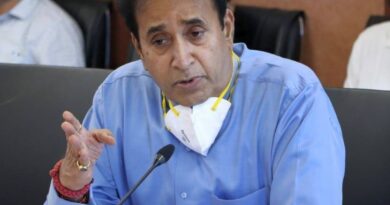Making sense of Rahul Gandhi’s politics
Making sense of Rahul Gandhi’s politics
Despite a hostile political environment, the Congress has not swerved hard to the right or the left
For the past seven years, a vibrant cottage industry has emerged in India that can be divided into two unequal halves: the first offering political advice gratis to Congress leader Rahul Gandhi and the second vigorously writing him off into political exile. However, this industry has failed to help us understand why the Gandhi scion continues to remain a danger to the evolving empire of the BJP. In part, this is because most commentators lack a big picture view of Prime Minister Narendra Modi’s ‘New India’ — a picture that is only now revealing itself and must be grasped in 3D.
New India
First, Mr. Modi’s preferred political model is Chinese-inspired. Like the Communist Party of China, the BJP wants total domination of the political landscape. What we are seeing, therefore, is the quest for ‘comprehensive politics’ that either silences the Opposition or makes it irrelevant. This ‘take no prisoners’ political approach is expected to culminate with the completion of the Central Vista project. The new Parliament building will not only physically displace Lutyens’ Delhi but will also becomes the grand venue with double the number of parliamentarians after a fresh delimitation exercise.
Those familiar with the Chinese National People’s Congress (NPC) would know that it has about 2,980-odd members, many of whom are part-time and work pro bono. The NPC functions as a rubber stamp mostly because the numbers make it unwieldy for debate and discussion. The end result is that power has been centralised within a fraction called the Central Committee, which is further distilled into an even tinier faction comprising seven members called the Standing Committee. The exercise of actual power is thus highly centralised and concentrated. There is every possibility that the Central Vista project could mirror the preference for this ‘made in China’ political arithmetic and geometry with an Indian variant of the standing politburo comprising only Mr. Modi and Home Minister Amit Shah — a two-part ‘partly free’ democracy.
The second dimension, the economy, draws from the South Korean strategy for cultivating Chaebols — family-owned conglomerates that are backed by unstinted state support. In a recent article, journalist Harish Damodaran describes how barely a couple of Indian conglomerates have now come to dominate the entire economic landscape. This Indian Chaebol version, in fact, has already been ‘imaged’ in the world’s largest cricket stadium at Ahmedabad, with both the bowling and batting ends unabashedly acknowledging the alliance of government and the two great conglomerates of India.
There is, however, a catch. The South Korean Chaebols were primed for global competition and much of their success and prestige depended on conquering global markets and supply chains. Alas, that does not seem to be the case, as of yet, for the Chaebols of New India. Instead, what one witnesses — from demonetisation, implementation of the Goods and Services Tax and the introduction of farm laws — is the steady transfer of the ‘generalised wealth’ held by the many (small and medium industries, traders, shopkeepers, middle farmers, etc.) to the few — notably New India’s Chaebols. No surprise that the wealth of Indian billionaires rose 35% during the pandemic year, even as much of the earnings and savings of the working population were decimated. Put bluntly, a steady transfer of wealth prior to the COVID-19 outbreak got accelerated during the lockdown.
The third and final part of the 3D involves injecting Hindutva into the life blood of India’s complex, heterogeneous and historically layered social worlds. These social engineering efforts — peaking with the Citizenship (Amendment) Act and the reading down of Article 370 — aimed hard at the cultural simplification of India. One is either Hindu or Muslim, vegetarian or a meat eater, bhakt or anti-national, and so on. The otherwise tangled colourful histories of overlap, nuance and ambiguity are now making the Indian a dull humourless monochromatic citizen.
Populism is actually global
In sum, New India appears as an all-out Asian endeavour that forges China (politics), South Korea (economics) and India (Hindutva society) into a single national bloc. But is this the case? Should we give the BJP under the leadership of Mr. Modi and Mr. Shah all the credit for carrying out this remarkable political script?
Not necessarily. Since 2011, global politics has sharply swerved towards a ‘right-wing populist’ turn. Starting with Viktor Orban’s election in Hungary, populism was unleashed in Brexit Britain, Donald Trump’s U.S., Rodrigo Duterte’s Philippines, Recep Tayyip Erdogan’s Turkey and Jair Bolsonaro’s Brazil. This populist wave, as pointed out by the Dutch scholar Cas Mudde, was about how strong men (all men, no women) learnt to game political fault lines within liberal democracies. And at the heart of their play was the ability to re-purpose information technology and the social media for dismantling institutions, throttling dissent and gutting democratic society. In other words, Mr. Modi and Mr. Shah were global but not original.
It is only within this big picture that one can meaningfully locate Mr. Gandhi’s persona and tactics. Mr. Gandhi strives to ‘hold the centre’ in Indian politics. The BJP and the Rashtriya Swayamsevak Sangh and their affiliates have populated and overwhelmed every conceivable political niche on the hard right with ruthless efficiency and total domination tactics. In contrast, the Congress, which always held the centre, aimed for gradualism, negotiation, adjustment and compromise — it essentially aimed for a moderate social temperature for governance. The Modi-Shah combine, in contrast, have broken this thermostat and now relentlessly churn society and create conditions for a ‘permanent bawal (tumult)’ — intense politicking and constant popular mobilisation.
The centre can hold
Given such a hard shift to the right, the most important strategy for a party occupying the political centre has to be about holding the line. And here, despite Mr. Gandhi’s acts of omission or commission, he has nonetheless been able to make sure that the Congress has not suffered annihilation by making a hard swerve either to the right or the left. Holding the centre, as political analyst Sushil Aaron recently wrote in The Wire, has been critically dependent on how Mr. Gandhi has over the years sustained ‘an ethic of decency’, while also ‘offering a vision for a social democratic India’ — behaviour and ideas that he has been good at articulating and keeping alive, despite the impossibly hostile political environment. In other words, the message has become louder than the messenger and it makes Mr. Gandhi the carrier of a legacy rather than a mere inheritor of a dynasty.
Increasingly, as the standing politburo of Modi and Shah accelerate the transfer of general wealth to the Indian Chaebols through the Hindutva orchestrated tactics for permanent bawal, there might emerge a blowback or even a yearning for a centre that can restore institutional checks and recover public decency. If there are hopes for such a future, then Mr. Gandhi’s legacy as the message will remain relevant, if not urgent.
Source link: The hindu



